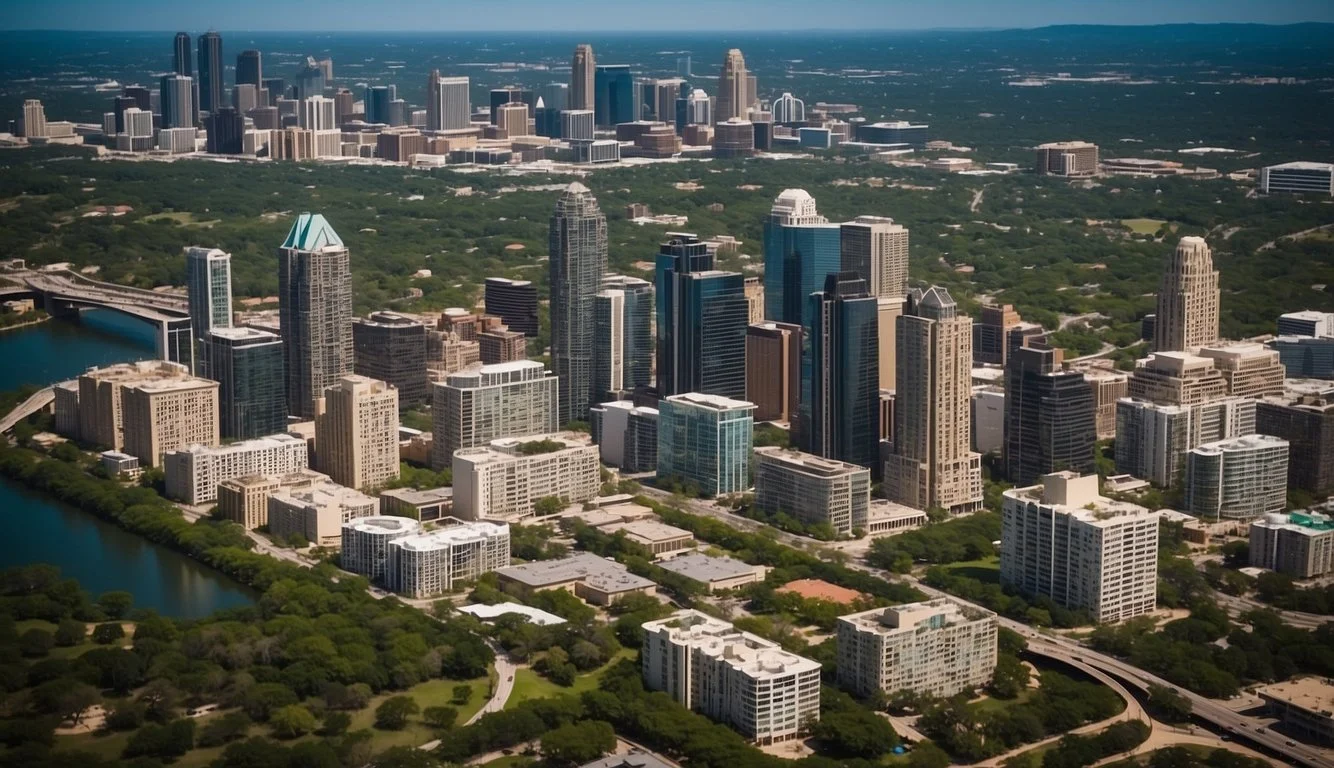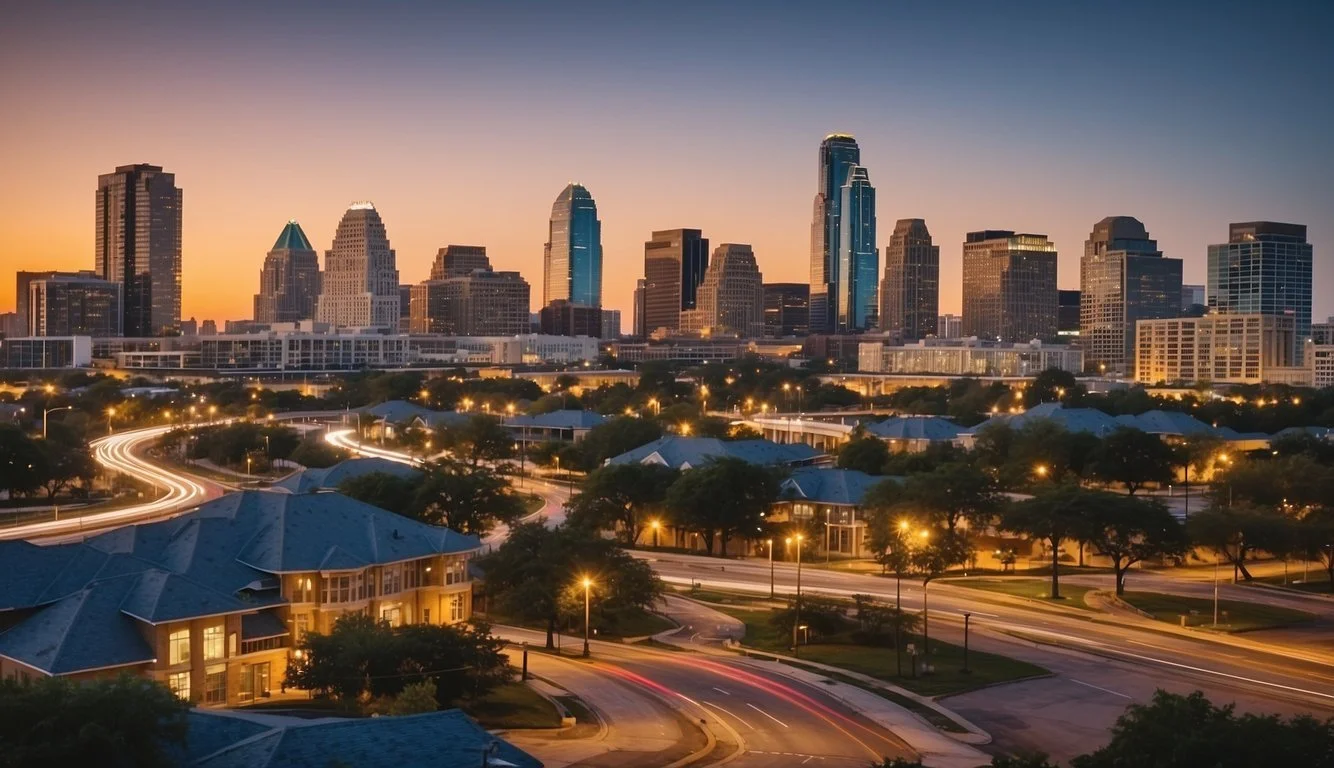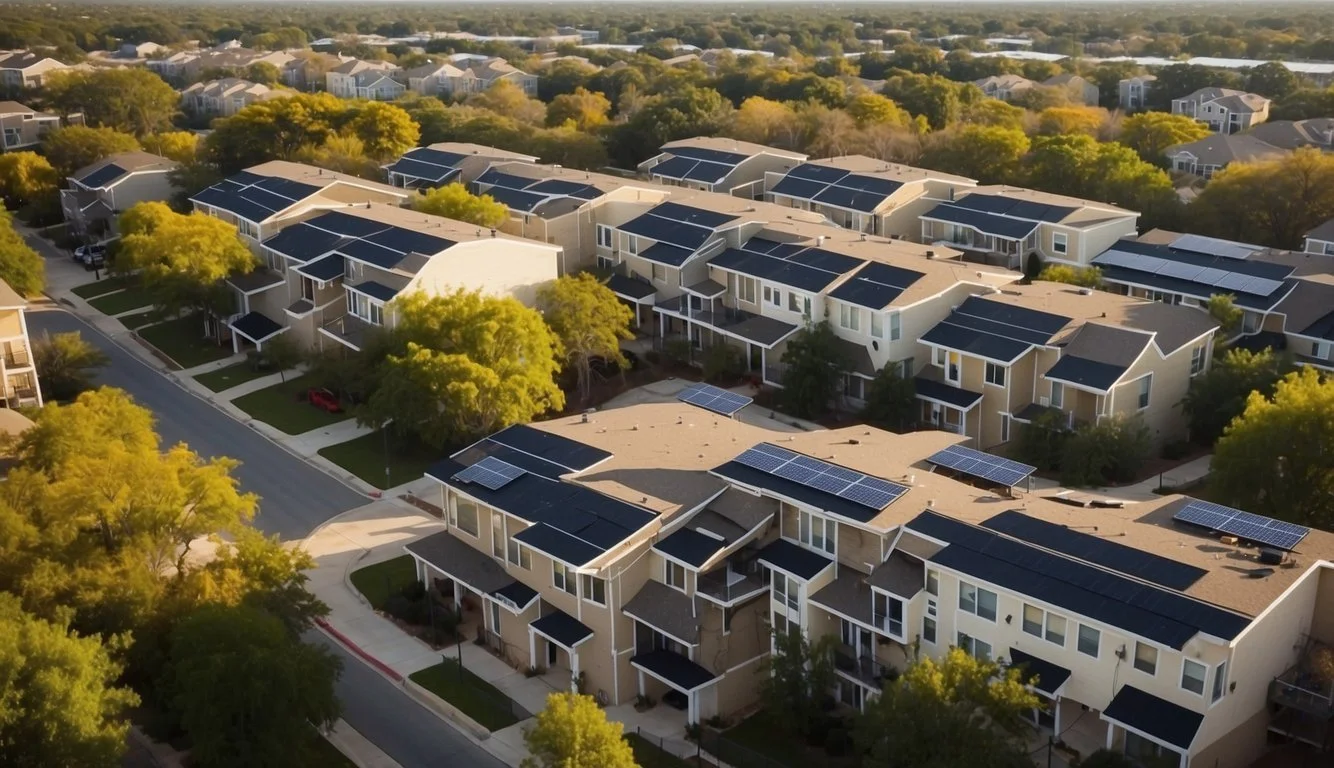The Advantages of Multi-Family Properties in Austin's Real Estate Market
Optimal Investment Insights
Investing in multi-family properties in Austin offers a unique set of advantages in today’s real estate market. Austin's multi-family sector, known for its remarkable growth, is driven by a young demographic, primarily the 25 to 34-year-old cohort, which fuels a strong rental demand. The city’s vibrant job market, bolstered by recent corporate moves from giants like Samsung and Tesla, signals ongoing potential for economic and population growth, making multi-family investments an attractive option.
Despite a slight cooling with increased vacancy rates to 10.6%, the market continues to show resilience. Investors are drawn to submarkets like Georgetown/Leander and Pflugerville, which have shown robust demand. Moreover, while single-family home prices have surged by 35%, multi-family properties offer a more stable investment with significant long-term gains.
The multi-family market in Austin provides a substantial inventory and competitive pricing. The average list price to sales price ratio stands at 96.2%, reflecting a balance between supply and demand, and properties typically sell within 47 days. With a growing labor market outperforming the national average at 2.7% growth, multi-family properties are positioned for continual demand, underscoring their potential for sustained returns.
Overview of Austin's Real Estate Market
Austin, Texas, has emerged as a formidable player in the real estate market, driven by a thriving economy and robust population growth. The city's residential and rental sectors have witnessed significant transformations, positioning Austin as a prime location for investment.
The Booming Local Economy
Austin's economy has experienced exponential growth, supported by diverse industries such as technology, healthcare, and education. The tech industry, in particular, has seen rapid expansion, with companies like Apple, Tesla, and Google setting up significant operations in the city.
The unemployment rate remains low, attracting talent from across the country. This economic prosperity boosts demand for housing, both single-family and multi-family units, stimulating the local real estate market.
Demographic Dynamics and Population Growth
Population growth in Austin has been remarkable. The city has consistently ranked among the fastest-growing metropolitan areas in the United States. This population surge is driven by young professionals and families seeking employment opportunities and a high quality of life.
The influx of new residents increases housing demand. The 25 to 34-year-old demographic, in particular, has led to a rise in rental demand, contributing to the vibrancy of the multi-family housing market.
Trends in Housing and Rental Demand
Increased construction of multi-family properties characterizes the current housing trends in Austin. For example, the first quarter of 2024 saw the completion of 19,328 new apartment units. Although there has been a rise in vacancies, now at 10.6%, the demand remains high, particularly in suburban areas like Georgetown and Pflugerville.
The median price for residential homes rose to $564,995 in March 2024, reflecting a 2.7% increase from the previous year. This price increase indicates strong buyer interest and investment potential in both single-family and multi-family properties.
Investment Landscape in Multifamily Properties
Austin's multifamily property market is thriving, driven by favorable demographics and economic conditions. Investors are recognizing the advantages of this asset class over single-family homes, and the market cycle dynamics are offering lucrative opportunities.
Recent Investment Sales and Trends
Austin has experienced a surge in multifamily investment sales, with significant growth in areas such as Georgetown/Leander and Pflugerville, attracting a younger demographic. This trend is fueled by stable rental demands and consistent income streams.
Development in these submarkets is robust, with new projects catering to the 25-34 age group, the largest cohort of renters. High interest rates and fluctuating single-family home prices have also pushed more individuals towards renting, enhancing the allure of multifamily properties.
Advantages Over Single-Family Investments
Multifamily properties present unique benefits compared to single-family homes. Investors can achieve greater economies of scale by managing multiple units within a single development. This leads to reduced per-unit costs and increased cash flow from a diversified tenant base.
Tax benefits and varied financing options also make multifamily investments attractive. These properties provide substantial portfolio growth and passive income opportunities, which are harder to attain with single-family residences. Furthermore, the high demand for rental units ensures lower vacancy rates and stable revenue.
Capitalizing on Market Cycles
Understanding market cycles is crucial for maximizing returns in multifamily investments. Austin's commercial real estate market shows distinct cycles of growth and stabilization, each offering different opportunities.
During periods of economic expansion, multifamily properties can command higher rents and increased asset values. Conversely, economic downturns might see a dip in property values, but the consistent rental demand helps in maintaining steady income streams. Investors who time their acquisitions to align with market cycles can capitalize on both price appreciation and rental income stability.
Comparative Market Analysis
Multi-family properties in Austin provide unique advantages both regionally and nationally. Comparing Austin's market to other major Texas cities and understanding its position in national rankings highlights its strengths and areas of opportunity.
Austin vs. Other Major Texas Cities
Austin has experienced significant growth in its multi-family property market, with a 6.6% increase in market inventory in Q1 2024. This growth is on par with other fast-growing cities like Raleigh/Durham and Nashville.
In contrast, Houston and Dallas have seen steady but lower growth rates in new apartment deliveries. Dallas-Fort Worth remains a heavyweight in the Texas real estate scene, but Austin's young demographic profile is pushing demand higher for rental properties, especially in submarkets like Georgetown/Leander and Pflugerville.
Median home prices in Austin have soared, making multi-family properties a more attractive option compared to owning single-family homes. The rental market remains robust due to the high unemployment rate during post-pandemic recovery periods, leading many to prefer rental options over long-term mortgage commitments.
Austin's Standing in National Rankings
On a national level, Austin holds a strong position among cities with booming multi-family property markets. The city’s blend of urban and suburban living, with high-rise condominiums and modern apartments downtown, makes it versatile and appealing.
Comparatively, Austin’s vacancy rate has seen a rise to 10.6% as of Q1 2024 from 7.5% in Q1 2022, which is higher than the national average. Despite this, the strong increase in market inventory indicates confidence in sustained demand.
In terms of investment volume, Austin rivals larger markets. The capital influx for multi-family investments is considerable, bolstered by the city’s tech-driven economy and young professional demographic, positioning it favorably in national rankings for real estate investment opportunities.
Multifamily Market Performance Indicators
The multifamily market in Austin is demonstrating unique trends in vacancy rates, rent growth, and construction activities. These factors create both opportunities and challenges for investors and residents.
Vacancy and Occupancy Rates
Austin has seen a notable shift in vacancy rates due to an influx of new apartment units. In Q1 2024, the completion of 19,328 units contributed to a higher vacancy rate as the market adjusts to the new supply. Despite the increase in vacancies, occupancy remains strong in certain submarkets like Georgetown/Leander and Pflugerville, which attract a younger demographic. High vacancy rates can signal opportunities for prospective tenants while posing challenges for property owners.
Rent Growth and Affordability
Rent growth in Austin's multifamily market has fluctuated significantly. The market experienced one of the largest rent decreases among major U.S. cities in early 2024. This trend highlights a temporary imbalance between supply and demand. However, the affordability of rents remains a critical factor for residents, particularly for the age group of 25-34. Projects started in 2021-2022 are balancing rent growth prospects, allowing for potential stabilization in the coming quarters, which is crucial for long-term affordability.
Construction and Leasing Activities
Construction activities have been robust, with 6% of national new completions in 2024 occurring in Austin. This surge is largely influenced by corporate expansions from companies like Samsung and Tesla. Leasing activities highlight a response to this new supply, with a focus on future demand. Although there may be initial leasing challenges due to increased inventory, strong job growth in Austin suggests positive long-term trends for leasing and overall occupancy rates.
Location and Neighborhood Considerations
In Austin’s multifamily real estate market, choosing the right location is crucial for maximizing investment potential. This includes considering the differences between core urban areas and emerging submarkets, as well as the prospects available in suburban and exurban regions.
Core Urban Areas vs. Emerging Submarkets
Core urban areas like Downtown Austin, North Austin, and East Austin are characterized by their high demand and well-established infrastructure. Downtown Austin offers proximity to major employers, cultural attractions, and public transit, making it a prime choice for high-income tenants.
North Austin is experiencing rapid development with the expansion of tech companies and commercial facilities. This area attracts both young professionals and families looking for a balanced urban lifestyle.
East Austin, known for its artistic flair and historic charm, has seen increased interest due to new development projects and gentrification. Properties here often offer unique amenities that appeal to creative professionals and young families.
Emerging submarkets present opportunities for early investment with potentially higher returns as these areas develop. Submarkets around Southeast Austin and parts of North Austin, beyond the central neighborhoods, are gaining attention due to lower initial property costs and growing infrastructure.
Prospects in Suburbs and Exurbs
The suburbs and exurbs around Austin hold significant potential for multifamily investments. Areas such as Pflugerville, Round Rock, and Buda are becoming increasingly popular. These locations offer larger space at lower costs compared to urban centers, attracting families and individuals seeking more affordable living options.
Pflugerville, as noted in recent transactions, is seeing considerable activity, highlighted by notable property deals like the acquisition by Treeline Partners. Round Rock benefits from its proximity to major employers like Dell Technologies, leading to steady demand for rental units.
Buda has witnessed steady growth due to its attractive residential community and improved connectivity to downtown Austin. The suburban appeal combined with lower property taxes makes these areas appealing for both investors and tenants.
Effective neighborhood considerations in Austin's multifamily market should focus on leveraging the high-demand urban cores and identifying emerging opportunities in lesser-known submarkets and suburbs.
Key Drivers of Multifamily Demand in Austin
The multifamily property market in Austin benefits from strong employment growth and attractive lifestyle amenities. These factors collectively sustain high demand and draw a diverse pool of residents to the city.
Employment Growth and Major Employers
Austin's robust job market is a primary driver of multifamily demand. The city consistently sees high job growth, attracting workers from various industries, notably tech. Major employers such as Tesla, which established its Gigafactory here, contribute significantly.
Companies:
Tesla: The Gigafactory provides numerous high-paying jobs.
Tech Hub: Austin hosts major tech companies like Google, Apple, and Dell, fostering a vibrant job market.
Employment:
High job growth rates, especially in tech and manufacturing.
New companies continually moving to Austin, enhancing economic stability.
Lifestyle and Amenities Attracting Residents
The quality of life in Austin is another major factor pulling residents. The city offers a blend of cultural, recreational, and leisure amenities that appeal particularly to the young demographic.
Amenities:
Leisure and hospitality: A thriving scene with restaurants, music venues, and recreational parks.
Georgetown/Leander and Pflugerville: Areas known for strong demand due to appealing submarkets.
Residents:
Attracts young professionals, especially those aged 20-34.
High levels of tenant satisfaction and lease renewals, with rates at 55.5%.
Through a combination of employment opportunities and lifestyle amenities, Austin continues to draw in a steady stream of residents, sustaining the multifamily real estate market's growth.
Challenges and Risks in Multifamily Investing
Investing in multifamily properties offers many potential benefits, but it is also fraught with challenges. Market volatility and the complexities of financing and borrowing costs play significant roles in shaping the investment landscape.
Understanding Market Volatility
Economic conditions can greatly affect the multifamily real estate market. Inflation drives rental rates up, making properties less affordable for tenants, which can lead to higher vacancies. Government policies, such as zoning laws or rent control measures, can also suddenly change, impacting property values and rental income.
Investors must stay informed about interest rate fluctuations. Higher interest rates result in more expensive borrowing, directly affecting profitability. Maintaining a keen awareness of local economic indicators and national market trends is crucial for mitigating these risks. It's essential to conduct thorough due diligence and have contingency plans in place.
Navigating Financing and Borrowing Costs
Securing financing for multifamily properties often requires higher initial capital outlay and a strong credit profile. Interest rates on loans can vary widely, affecting monthly payments and long-term returns. Investors need to explore different financing options, such as fixed-rate and adjustable-rate mortgages, to find the best fit for their investment strategy.
Borrowing costs include not just the interest rates but also fees for appraisals, legal services, and loan origination. These can add substantial upfront costs, eating into the budget set aside for property improvements or emergency funds. Efficient financial planning and a solid understanding of loan terms are essential to navigate these challenges effectively.
Selecting the right lender and loan type can significantly impact an investor's ability to achieve sustainable growth in the multifamily sector. It's imperative to work with financial advisors and real estate experts to optimize financing strategies and manage risks.
Future Outlook and Predictions
The future of Austin's multi-family real estate market centers on anticipated population growth and an increased focus on innovative development and construction techniques. Analyzing these factors provides a clearer perspective on the market's trajectory.
Projections for Population and Market Growth
Austin continues to be a magnet for new residents, enhancing demand for multi-family properties. Population growth in the region is expected to persist, propelling an ongoing need for residential units. This growth is matched by a slight increase in vacancies and a rise in new listings, as reported with recent market data indicating more active listings compared to previous years.
Supply-demand imbalance persists despite the upward trend in supply, with construction starts and units under construction hitting notable figures. The Matrix Multifamily Austin Report reveals that there are around 42,000 units currently underway, suggesting robust annual net deliveries. These figures emphasize the area's capacity to accommodate new residents while striving to balance the supply-demand equation.
Innovations in Development and Construction
Recent advancements in construction and development play a crucial role in shaping Austin's multi-family housing market. The increased focus on sustainable building practices and smart technology integration is setting new benchmarks. Constructing energy-efficient buildings and using eco-friendly materials are now more common, aiming to meet both regulatory standards and market expectations.
Developers are also embracing modular construction and prefabrication to expedite project timelines and reduce costs. Annual net absorption rates highlight that these innovative developments are readily absorbed into the market, indicating a positive reception from both investors and residents. 42,000 units underway and various units under construction signify a commitment to maintaining a steady influx of modern and sustainable housing options.
Sustainable and Affordable Housing Strategies
In Austin, sustainable housing strategies are crucial for managing growth and ensuring long-term affordability. These strategies often involve various stakeholders, including local government and investors, working together to create effective solutions.
Contributions to Affordable Housing
Multi-family properties play a significant role in providing affordable housing options. The Housing Authority of the City of Austin (HACA) collaborates with developers to increase the supply of affordable units. Various funding programs, like the Capital Improvement Program (CIP) and sustainability fund transitions, support these initiatives.
Efforts have resulted in initiatives such as the Affordable Housing Blueprint, aiming to add 60,000 affordable units. Successful projects like San Marcos’ community collaboration highlight the effective integration of sustainable practices in affordable housing development.
Adhering to Regulations and Policies
Adhering to local and federal housing regulations ensures sustainability and affordability in new developments. The City of Austin has streamlined its construction permit process and reformed the land development code. These changes expedite the building of compliant multi-family properties.
Policies set by bodies like the U.S. Department of Housing and Urban Development (HUD) guide sustainable practices, including energy efficiency and green building goals. Adherence to these policies is crucial for maintaining affordable housing while also meeting environmental targets.
This multifaceted approach ensures that Austin's real estate market continues to grow responsibly.
Advantages of Diverse Property Types
Different property types in Austin’s real estate market can offer various benefits that cater to a range of investor needs. Each type of multifamily property comes with its own set of advantages, potentially impacting returns and management requirements.
Garden-Style vs. Mid-Rise and High-Rise Properties
Garden-Style Properties often feature buildings spread over larger plots, providing ample green space and lower building heights. These are popular in suburban areas like Leander and Pflugerville. They attract tenants seeking more outdoor space and a community feel.
On the other hand, Mid-Rise and High-Rise Units are typically located in denser urban settings, such as downtown Austin. These buildings maximize land use with multiple levels, offering amenities like rooftop pools and fitness centers. They appeal to tenants looking for modern conveniences and proximity to urban amenities.
Comparison Table:
Property Type Key Features Typical Locations Garden-Style Lower height, green spaces, community feel Leander, Pflugerville Mid-Rise/High-Rise Higher building height, urban amenities Downtown Austin
Impact of Property Type on Investment Performance
The type of multifamily property can significantly influence investment performance. Garden-Style Properties tend to have lower construction costs and are easier to maintain, making them a stable choice with potentially lower vacancy rates due to suburban appeal.
Mid-Rise and High-Rise Buildings, although more expensive to build and maintain, can command higher rents due to their prime locations and luxurious amenities. They may offer higher returns in the long run through premium rental rates and increased property appreciation, especially in areas like downtown Austin and Round Rock.
Investors must assess their budget, target tenant demographics, and long-term investment goals to choose the most suitable property type.






